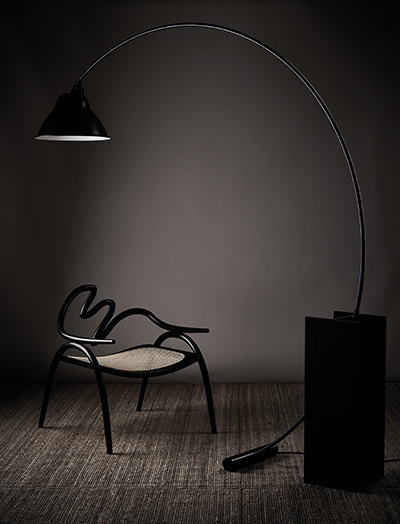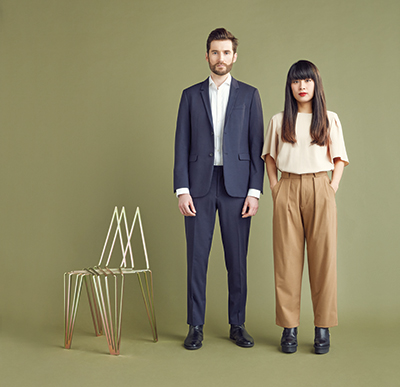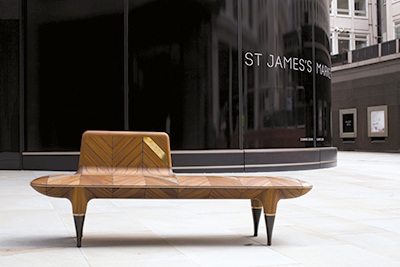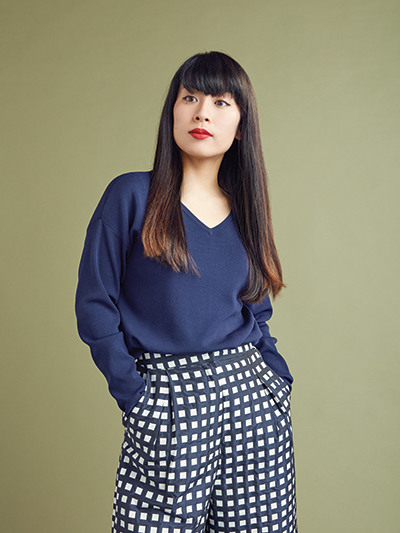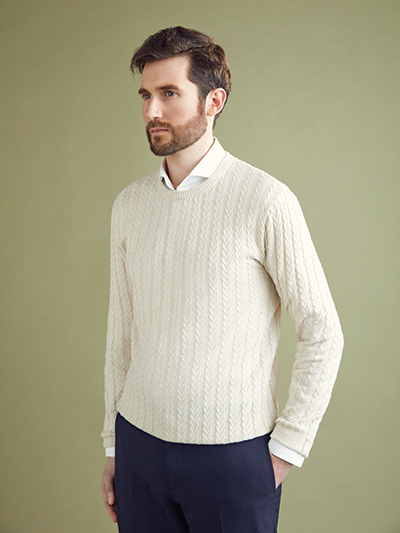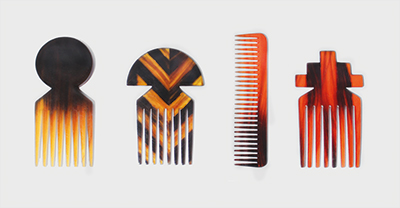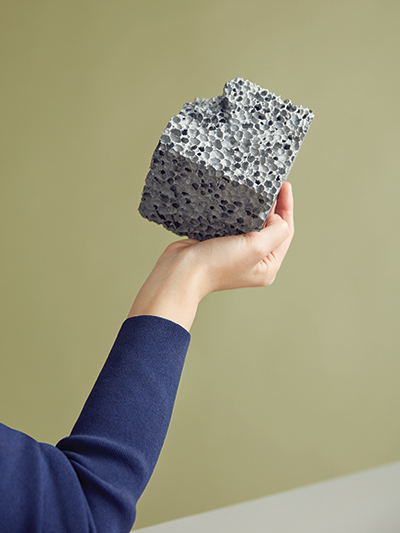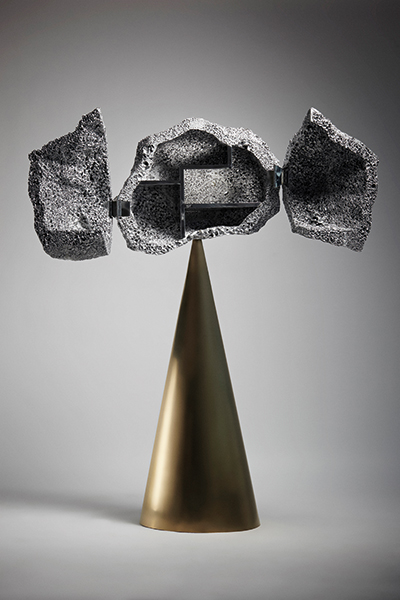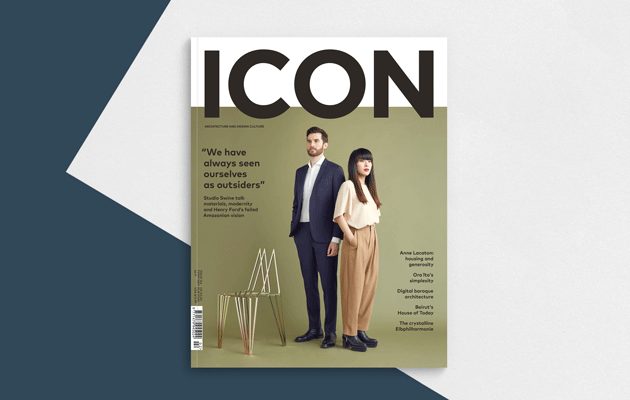|
|
||
|
Alex Groves and Azusa Murakami set out as design explorers, discovering beauty in ocean plastic and human hair. Then they decided to resurrect a lost Amazonian city … ‘We have always seen ourselves as outsiders, but through being outsiders we found our own way of doing design that is very different from other people’s,’ says Alex Groves who, along with wife Azusa Murakami, forms Studio Swine. That said, the outsider label is paying off. This summer, at the invitation of Oxford Properties and The Crown Estate, the studio completed a beguiling collection of outdoor furniture for the new St James’s Street Market in London’s Mayfair. Neither client nor brief were typical – it is more common to see them working with galleries than developers. Nevertheless, the St James’s Street project showcased the studio’s unerring ability to extract a story from the site and produce something both contextual and new. The studio produced four bench designs – Shirt, Shoe, Pipe and Tie – and some colourful stools that referenced the rich parquet floors and brass handles of the local shops and the looms used to weave silk for shirts. At Milan Design Week in April, they will unveil an installation – a blossoming, tree-like sculpture – for fashion brand Cos. The studio, set up in 2011, appears to be the classic intellectual pairing of a boundless dreamer (artist, Groves) tempered by an arithmetical pragmatist (architect, Murakami). In reality, they share similar outlooks. ‘We never question whether what we do is art or design. What is more pertinent is whether it is interesting or relevant or uses exciting materials,’ says Groves. Their interest in diminishing natural resources coupled with their targeting of unlikely materials – often the by-products of globalised consumerism – has made them easy to pigeonhole as sustainable designers. The descriptor is a turn-off. ‘It sounds so frumpy. We don’t like eco-design either. For us it is super important, but at the same time it immediately becomes the story,’ says Murakami.
The Fordlandia furniture collection draws influence from Brazilian tropical modernism
The collection is made using ebonite – a mix of vulcanised rubber, sulphur and linseed oil The designers’ wariness of the term is understandable. When anyone mentions ‘green design’, something inside all of us quietly dies. Studio Swine’s skill has been the ability to transform something as unappealing as, say, human hair into a pretty plausible interpretation of Shanghai deco, or plastic reclaimed from the ocean into art. Trends hold zero interest. ‘Although we love marble and brass, we don’t tend to use them. They’re beautiful in themselves. Sea plastic is quite disgusting but if something can cross a line from Swine stands for Super Wide Interdisciplinary New Explorers – a joke that stuck. ‘We liked that pigs are seen as disgusting, but they make nice Parma ham and find truffles,’ says Groves. They are narrative designers in the purest sense, with the message often transcending the end result. ‘Although we have furniture as an end product, it’s only a vehicle to express our ideas and the concept behind the product,’ says Murakami. So, potentially, it could be anything? ‘It could, yes, definitely.’ However, their loyalty to established typologies, such as chairs or combs as well as unapplied forms, is wise. There is far more communicative power in a recognisable object than a high-concept installation: a story badly told is no story at all.
Alex Groves and Azusa Murakami
The project for the St James’s Street market (2016) references the parquet floors of local shops With the Fordlandia project, commissioned by Ligaya Salazar of London’s Fashion Space Gallery, the studio has found its magnum opus. It takes its name from Henry Ford’s stupefyingly ambitious and ultimately doomed rubber plantation in the heart of Brazil’s Amazon rainforest. The arch-modernist’s dream of an endless supply of cheap rubber for his cars was torpedoed as much by his attempts to Americanise the local workers as the hostility of the rainforest itself. Ford never visited his ill-fated creation and, following a revolt by the indigenous population, it was abandoned in 1934. The remnants of the settlement sit slowly rotting. In July last year, Groves and Murakami negotiated their way there from the small town of Santarém, which sits at the point where the Tapajós River meets the Amazon river. Today it is dead, save for one inhabitant who continues to use the industrial lathes to repair local fishing boats. The studio made a film about him – the last worker in Fordlandia – and pitched it to the BBC. Grand failure is unquestionably seductive but there are deeper parallels between Ford and Studio Swine. ‘He was vegan and wore a soybean fibre suit,’ says Groves. ‘He was one of the first to have a vertically integrated company: forests for supplying wood, iron ore mines for steel. He wanted recycling to be at every stage, so he had scientists make artificial leather from wood dust.’ The moment when regional identity and modernism collide is a recurring source of fascination, distilled in the dark, spidery ebonite forms of the furniture produced so far for the Fordlandia project. The vulcanised rubber is a sustainable alternative to endangered South American hardwoods and can be manipulated in a similar fashion into super-thin, sculptural forms. The collection is moody, almost haunting, echoing Brazilian tropical modernists like Sergio Rodrigues and Giuseppe Scapinelli, albeit with a strong dose of southern gothic. ‘Tropical modernist chairs show a totally different way of thinking to European modernism. You have this more casual lounge culture, so they are inclined to be wider and lower to the ground.’ Neither post-modernist agglomeration nor slavish pastiche, the collection is the studio’s most fully realised work. Strangely, it marks a beginning.
Architect Azusa Murakami
Artist Alex Groves To date, the object has been the resolution of process and material. Fordlandia is a sea change, with the furniture acting as prelude to the main event. What that might be is yet to be determined, but this is assuredly a long-term project. ‘With Fordlandia, what we are really asking is: what if it didn’t fail? What if they discovered ebonite and the factories were still there producing goods for the household. We love the idea that you could go on a boat to this immersive Fordlandia world and become so immersed that your sense of reality would dissolve.’ In a world where hyperbole is currently valued more than empirical truth, the dissolution of what is real and what is not captures the very essence of the zeitgeist. The influence of film-maker Adam Curtis (the couple had just finished watching Hypernormalisation) is clear, but so too is that of immersive theatre troupe, Punchdrunk. ‘We would love to achieve that level of epicness,’ says Groves. The pair met while studying at the RCA, flourishing under the tutelage of Jurgen Bey and Tord Boontje. What started out as a relationship evolved into a professional collaboration when, as Murakami puts it, ‘we began interfering with each other’s thoughts’. Their first project was Pig Truck – a mobile food stall where you could cook pigs’ heads on hot rocks Pacific Island-style. On graduation in 2011, the pair moved to São Paulo in search of a project. They had written to numerous local studios before the move. No one wrote back and they ended up following catadores – waste-pickers who collect cans and cardboard to sell. Using an improvised furnace fired by leftover vegetable oil, the pair melted aluminum cans, casting the molten liquid in sand from building sites using found objects like palm fronds or hubcaps. ‘It is a total portrait of the place,’ says Groves. Their resourcefulness is impressive, as is their belief. ‘With São Paulo we just thought, “Oh, you know it will happen”. I suppose this level of naivety sometimes helps propel projects forward,’ Murakami adds.
For Hair Highway (2014), the studio used human hair mixed with resin to create a range of luxury objects including combs and vases The pair estimate that they spend 80 per cent of their time fundraising – be that applying for grants or Kickstarter projects. A film-maker and fellow RCA alumnus Juriaan Booij is an integral figure in Studio Swine’s universe, helping the duo flesh out a comprehensive narrative around their work. An associate director of Ridley Scott’s, he has documented their most significant projects. The early collaborations focused on process, intercut with loose, scene-setting shots. Success came quickly, with National Geographic picking up Hair Highway in 2014. Steadily, the films have become more sophisticated, culminating in Terraforming – a slick science fiction short for Swarovski. ‘Advertising is a dirty word, but it is actually a critical art. Jonathan Glazer did those incredible Guinness adverts. We would love to make a full-length science fiction film.’
The Metallic Geology cabinets (2014) are made from aluminium that is foamed to create a lightweight material with the appearance of pumice Underlying their quiet demeanour is a restlessness. They enjoy seeing the world through a foreigner’s eyes and a move to the US surely beckons as the Fordlandia project evolves. You feel the unrelenting nature of American working culture would suit them. They profess a hatred of public holidays (‘We work all the time and people don’t get back to you’) and the New York minute has more than enough seconds. ‘We like to constantly feel like outsiders. It is a surreal but liberating feeling to arrive somewhere and not know anyone. You have to start completely from scratch.’ The future looks assured. Large brands will continue to seek their skill as a creative agency. The one danger is that the lure of commerce will dilute the studio’s astonishing creativity and water down the message. ‘If it allows us to do the projects we are interested in, then it is just a way of giving us greater freedom,’ says Murakami. |
Words James McLachlan
Portraits Pelle Crépin |
|
|
||



